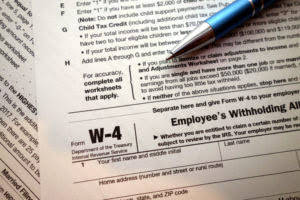The NWC metric is often calculated to determine the effect that a company’s operations had on its free cash flow (FCF). Aside from net working capital gauging a company’s liquidity, the NWC metric can also provide insights into the efficiency at which operations are managed, such as ensuring short-term liabilities are kept to a reasonable level. For example, if company ABC has $15k in accounts payable, $2k in accrued liabilities, and $10k due on a working capital loan this year, then that company would have $27k in current liabilities. For example, if company ABC has $100k in cash, $15k in accounts receivable, and $10k in inventory, then that company would have $125k in current assets. Net working capital (NWC) is a measure of a company’s liquidity and short-term financial health.

Access Exclusive Templates
In the final part of our exercise, we’ll calculate how the company’s net working capital (NWC) impacted its free cash flow (FCF), which is determined by the change in NWC. The rationale for subtracting the current period NWC from the prior period NWC, instead of the other way around, is to understand the impact on free cash flow (FCF) in the given period. By the end of the forecast period, the company’s working capital cycle decreased by 14 days, from 60 days to 46 days in Years 1 and 5, respectively. Suppose we’re tasked with calculating the working capital cycle of a company to measure its operational efficiency on a pro forma basis. If you know what working capital is, then you know what net working capital is.
- As for accounts payables (A/P), delayed payments to suppliers and vendors likely caused the increase.
- Always double-check your figures and classifications to avoid these pitfalls.
- • Net working capital measures a company’s liquidity and short-term financial health by comparing current assets to current liabilities.
- To calculate the change in net working capital (NWC), the current period NWC balance is subtracted from the prior period NWC balance.
- In simple terms, working capital is the net difference between a company’s current assets and current liabilities and reflects its liquidity (or the cash on hand under a hypothetical liquidation).
- This compensation may impact how and where products appear on this site (including, for example, the order in which they appear).
Key Points

Remember to exclude cash under current assets and to exclude any current portions of debt from current liabilities. For clarity and consistency, lay out the accounts in the order they appear in the balance sheet. Since inventory days and A/R days are projected to decrease, the impact on working capital days should be positive (i.e. more operational efficiency). To improve its net working capital, a business can increase its current assets, reduce its current liabilities, or both. For example, securing extra inventory might boost a company’s assets; refinancing your business debt at a lower rate could help bring down liabilities. Net working capital is calculated using items from a balance sheet (including cash, accounts receivable, inventory, accounts payable, interest payable on loans, and taxes payable).
How to Find Change in NWC on Cash Flow Statement (CFS)
- You just have to subtract the previous year’s working capital from the current year’s working capital which we have just calculated in the bellow table.
- A positive NWC indicates the company has enough assets to cover its short-term liabilities, suggesting financial stability.
- The change in net working capital is crucial for understanding how well a company manages its day-to-day operations and finances, which in turn influences business decisions and investment strategies.
- To reiterate, a positive NWC value is perceived favorably, whereas a negative NWC presents a potential risk of near-term insolvency.
- Company XYZ has the following in current assets and current liabilities.
Now, suppose Green Valley Accounting Security Grocers has $250,000 in current assets and $400,000 in current liabilities. In the above picture, the highlighted part represents the total current assets of Walmart Inc. Here, by summing up all the current assets, we get the total current assets for the years and 2019 are $61,806 million and $61,897 million respectively. Hence, the company exhibits a negative working capital balance with a relatively limited need for short-term liquidity. The working capital cycle formula is days inventory outstanding (DIO) plus days sales outstanding (DSO), subtracted by days payable outstanding (DPO). Conceptually, the operating cycle is the number of days that it takes between when a company initially puts up cash to get (or make) stuff and getting the cash back out after you sell the stuff.

Net Working Capital = Current Assets – Current Liabilities
When this happens, it may be easier to calculate accounts receivables, inventory, and accounts payables by analyzing the past trend and estimating a future value. The working capital cycle monitors the operational efficiency and near-term liquidity risk of a given company. Lenders and investors assess NWC to determine a company’s financial health.

- Learn the formula, why it’s important, and how to calculate it easily with our free tool.
- However, it may take more than one or two quarters to see whether the debt was a good decision or not.
- NWC is most commonly calculated by excluding cash and debt (current portion only).
- Both refer to the difference between all current assets and all current liabilities.
- Since companies often purchase inventory on credit, a related concept is the working capital cycle—often referred to as the “net operating cycle” or “cash conversion cycle”—which factors in credit purchases.
- The most common examples of operating current assets include accounts receivable (A/R), inventory, and prepaid expenses.
- It is often created by an analyst using an Excel spreadsheet, and is calculated in accordance with GAAP (generally accepted accounting principles), using the accrual method of accounting.
As a small business owner, it’s a good idea to calculate and manage your fixed assets net working capital. This helps ensure that your company can meet its day-to-day operating expenses while using its financial resources in the most productive and efficient way. Lenders generally like to see positive NWC because it suggests that a company can take on additional debt and keep up with payments.
